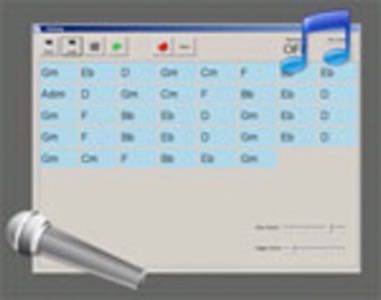Via an article in the New Scientist today, we were pointed to a Microsoft research project called MySong. MySong isn’t web technology, but it is very, very cool technology, and clearly it would make one heck of a web application. The application takes user inputted voice and pairs it with machine generated musical accompaniment. Though MySong won’t be spitting out any top 40 hits, the results are surprisingly good and can theoretically turn shower songsmiths into virtual virtuosos.

MySong is a project from Microsoft researchers Dan Morris, Sumit Basu, and Washington State grad student Ian Simon. The program is made to “give many folks who would never even taste songwriting a great opportunity to just get a glimpse of music creation,” according to the project’s web site. It is “more than good enough to make a cute birthday song for Mom or a Valentine’s Day song for your significant other.” Sounds like a great premise for a web app to us!
The program works by identifying the 12 standard musical notes in a sung melody, and then feeding those notes into an algorithm that has been trained by listening to 300 songs in varying genres and learning how to identify chords and melody fragments that work well together. The result is a series of musical accompaniments that users can adjust via sliders for “happy factor” and “jazz factor.”
“I suspect musicians will argue that this is another step towards homogenized elevator music for all,” Peter Bentley, a computer scientist at University College London, told New Scientist. “But I see a big market for this, whether it’s liked by musicians or not.” We agree, and we think the web is the perfect place to find that market.
Last year we reviewed a startup backed by Pete Townsend of “The Who,” Method Music, that created personalized theme music based on user input (specifically: a voice sample, a picture, and a recording of a rhythm). The results were… not unimpressive, but neither were they very compelling. MySong, on the other hand, produces some very impressive (to my musically untrained ear) output and has a much more compelling set of use cases.
Though Microsoft hasn’t decided how or if to market the MySong technology, Morris told the New Scientist that it wasn’t very computationally demanding. “It could even run on a cellphone,” he said.
Check out this sample of voice-only input, the MySong output, and a full musical arrangement after being fed through Band-in-a-Box. You can draw your own conclusions, but we were very impressed and hope that someone brings the MySong technology to a web browser in the future. We have a feeling this thing would kill as a Facebook or OpenSocial application. There are many more samples on the MySong page.

















